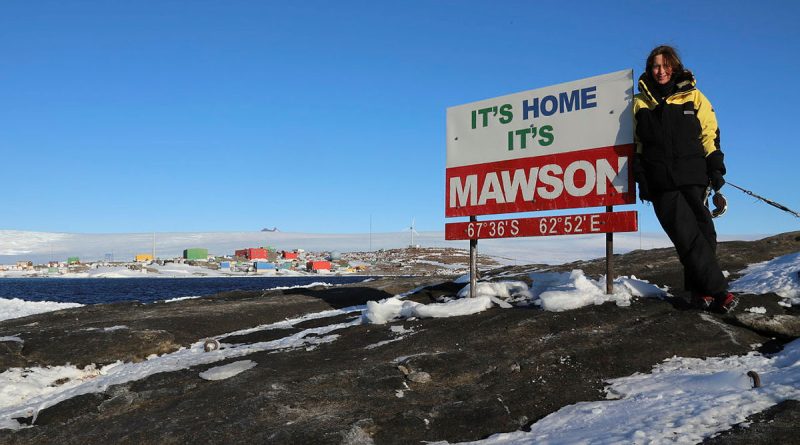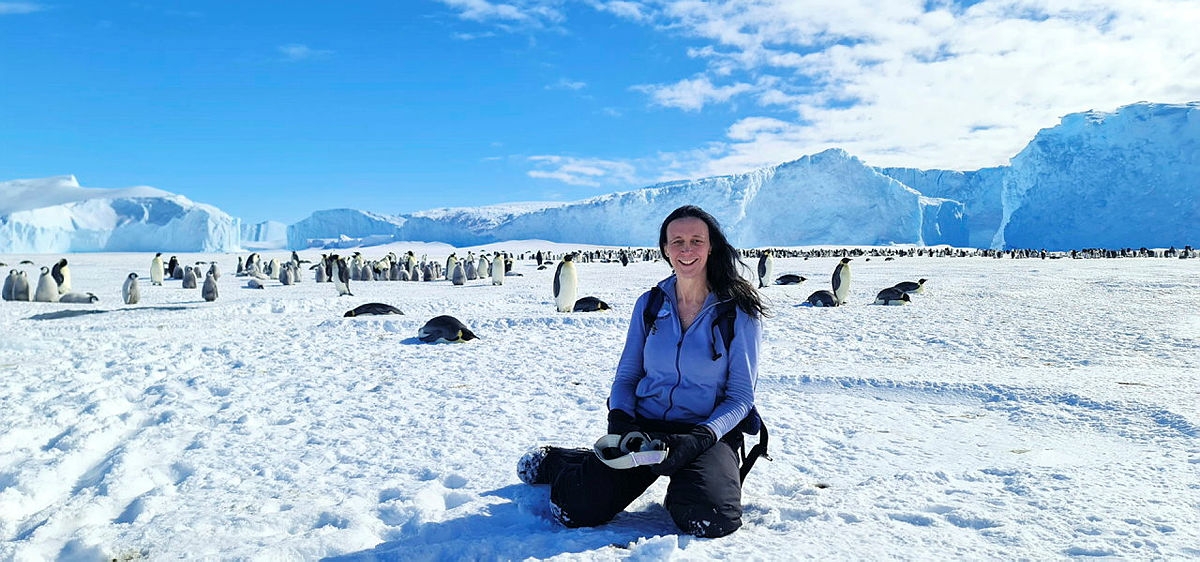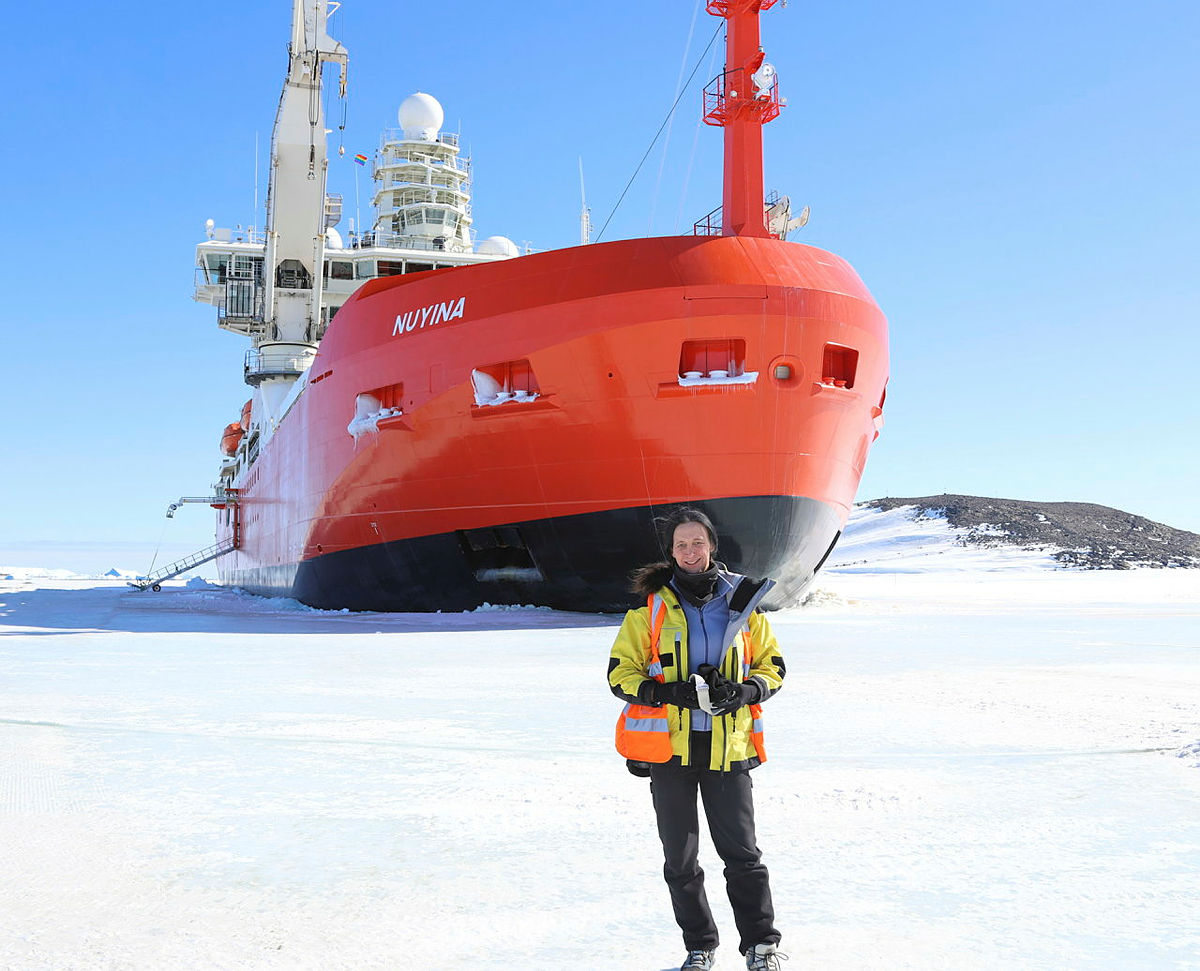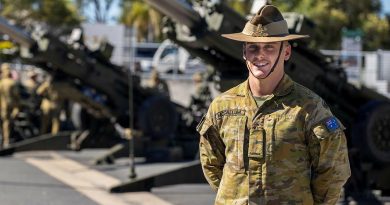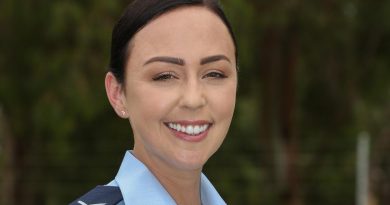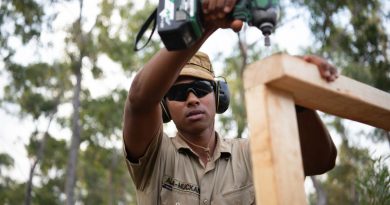Breaking ground in Antarctica

Before the Antarctic ice breaker arrived at nearby Davis research station, Mawson’s winter expeditioners anticipated the “tantalising promise” of fresh fruit after having eaten the tinned version for months.
CAPTION: Squadron Leader Catherine Humphries with the “It’s Home It’s Mawson” sign at the research station. Story by Corporal Veronica O’Hara.
Squadron Leader Catherine Humphries, Mawson’s station leader for the Australian Antarctic Program, is set to complete her year-long tenure, having arrived last February.
Her temporary role bore many similarities to her regular job as a ground defence officer in the Royal Australian Air Force, which involves protecting a military airfield and keeping everything and everyone safe in the face of threats.
At Mawson research station, she leads 19 expeditioners, including tradespeople, supply officer, doctor, chef and Bureau of Meteorology observers.
Other responsibilities included managing fuel supplies, aviation operations for two airfields (ski landing areas), heavy machinery and ensuring ongoing scientific research is done.
While not targeted by enemies in Antarctica, the weather is treated as one.
Temperatures dropped to -30 degrees Celsius, wind chill felt like -50, and the strongest blizzard blew more than 180km/h in October.
The expeditioners also experienced 18 “blizz out” days, when no one goes outside without Squadron Leader Humphries’ permission, and even then, only in pairs with radios.
Research activities at Mawson include the study of cosmic rays and space weather, atmospheric physics, geophysics, glaciology, meteorology and polar medicine.
But observing penguin colonies is generally everyone’s favoured activity.
CAPTION: Squadron Leader Catherine Humphries observes the emperor penguin colony at Auster.
Teams trekked west up to 150km across sea ice in winter, when it can be traversed safely, to reach the emperor penguins.
En route, they regularly stop to drill into ice, checking it’s thick enough for their heavy tracked vehicles.
“It’s surreal walking on 600 to 700 metres of solid ice that’s millions of years old and covering an entire continent you can’t see,” Squadron Leader Humphries said.
Squadron Leader Humphries was responsible for the planning and operation of these expeditions.
“They are effectively a patrol, exposed to environmental threats for up to seven days with no real assistance or chance of rescue if something goes wrong,” she said.
Established in 1954, Mawson is the longest continually inhabited station in Antarctica.
Keeping people effective to get missions done, yet not putting them at risk, was always a consideration for Squadron Leader Humphries.
“I need to keep aware of what’s happening on station. What people are doing or planning, how they’re coping with the isolation, each other and the environment, then making decisions to keep things happening,” she said.
As station leader, everything rested on her. It’s a job with no off-time and “full on”. To manage her wellbeing, Squadron Leader Humphries spoke with family each day.
She socialised, especially with the spa and sauna, cinema and crochet clubs, which also helped to maintain connection with other expeditioners.
Otherwise, she kept busy sorting the 17,000 photos and videos she took.
Yet the scenery, especially auroras, was never tiring, even when walking head down in 100 km/h winds.
“Other than when I hiked in the Australian Alps with no one around, it’s the only time I felt completely in touch with the earth,” Squadron Leader Humphries said.
CAPTION: Squadron Leader Catherine Humphries in front of the new Australian ice breaker, RSV Nuyina, which recently arrived with supplies and summer expeditioners at Davis research station.
.
.

.
.

